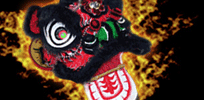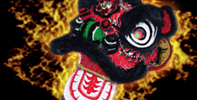The Five Elements and their cycles of balance and imbalance are the basis for much of Chinese culture.
These elements were used for describing interactions and relationships between phenomena:
-
METAL (Jin)
Yin or Zang (Solid) Organ: Lungs
Yang or Fu (Hollow) Organ: Large Intestine
-
WOOD (Mu)
Yin or Zang (Solid) Organ: Liver
Yang or Fu (Hollow) Organ: Gall Bladder
-
WATER (Shui)
Yin or Zang (Solid) Organ: Kidneys
Yang or Fu (Hollow) Organ: Urinary Bladder
-
FIRE (Huo)
Yin or Zang (Solid) Organ: Heart and Pericardium
Yang or Fu (Hollow) Organ: Small Intestine and Triple Heater
-
EARTH (Tu)
Yin or Zang (Solid) Organ: Spleen
Yang or Fu (Hollow) Organ: Stomache
These five phases describe both a creation (sheng) cycle
and an destruction (ke) cycle of interactions between the phases.
These cycles are sometimes called "mutual production"
and "mutual conquest". These are the cycles of balance.
In the generating or creation cycle:
-
METAL collects WATER
-
WATER nourishes WOOD
-
WOOD feeds FIRE
-
FIRE makes EARTH
-
EARTH creates METAL
In the controlling or destructive cycle:
-
METAL splits WOOD
-
WOOD breaks EARTH
-
EARTH absorbs WATER
-
WATER douses FIRE
-
FIRE melts METAL
If any of the elements are over abundant they can disrupt the balance.
Fire can create Earth, but too much Fire will melt the Earth.
Water can control Fire, but too much Fire will evaporate Water.
These are the cycles of imbalance, the overacting (cheng) cycle and
the insulting (wu) cycle.
In the overacting cycle which follows the creation cycle:
-
Too much METAL overacts WATER
-
Too much WATER overacts WOOD
-
Too much WOOD overacts FIRE
-
Too much FIRE overacts EARTH
-
Too much EARTH overacts METAL
In the insulting cycle which is the reverse destructive cycle:
-
Too much METAL insults FIRE
-
Too much WOOD insults METAL
-
Too much EARTH insults WOOD
-
Too much WATER insults EARTH
-
Too much FIRE insults WATER
|



 Saturday, December 20
Saturday, December 20  Site Intro
Site Intro Guest Book
Guest Book Contact Us
Contact Us Mailing List
Mailing List Testimonials
Testimonials Coupons
Coupons School Location
School Location Class Schedule
Class Schedule Tien Shan Pai Curriculum
Tien Shan Pai Curriculum Wing Chun Curriculum
Wing Chun Curriculum Tai Chi Chuan Curriculum
Tai Chi Chuan Curriculum Seminars
Seminars Event Calendar
Event Calendar News
News Articles
Articles Photo Gallery
Photo Gallery Products
Products Chinese Terminology
Chinese Terminology FAQ
FAQ


